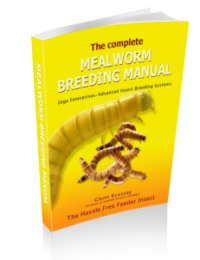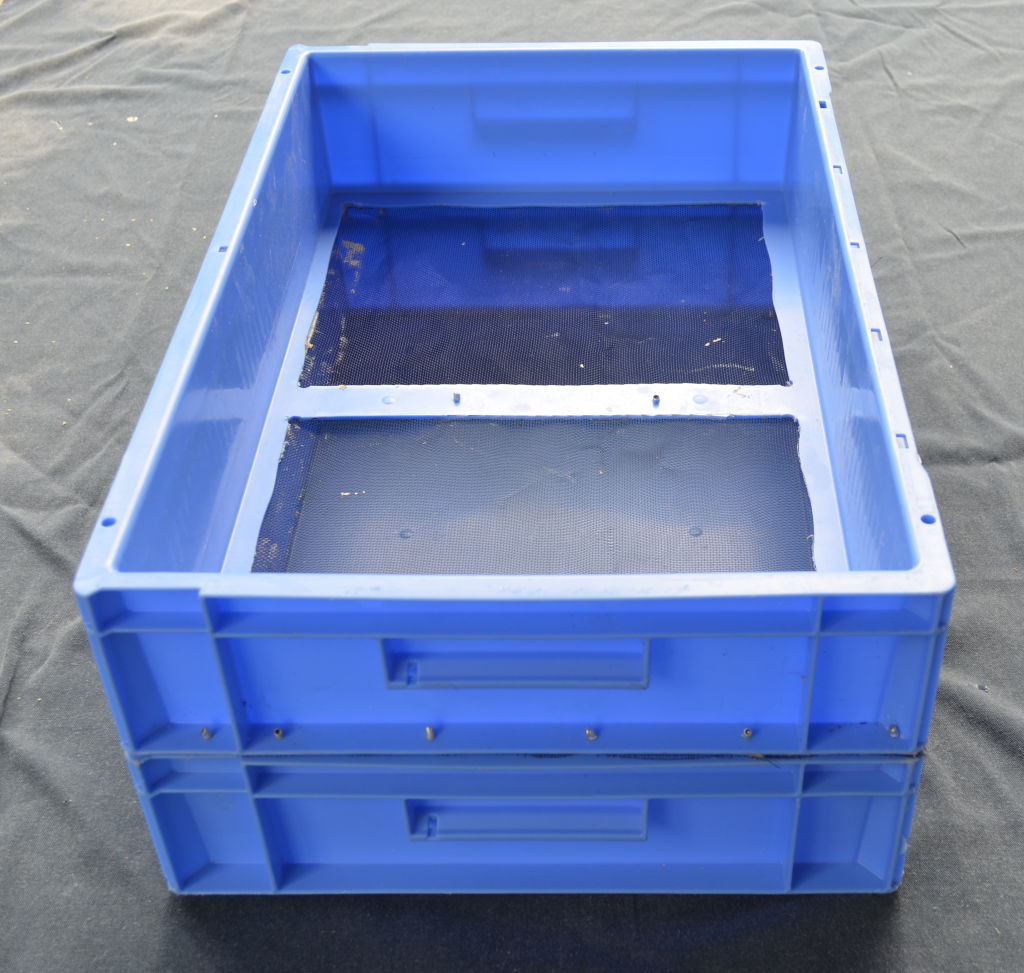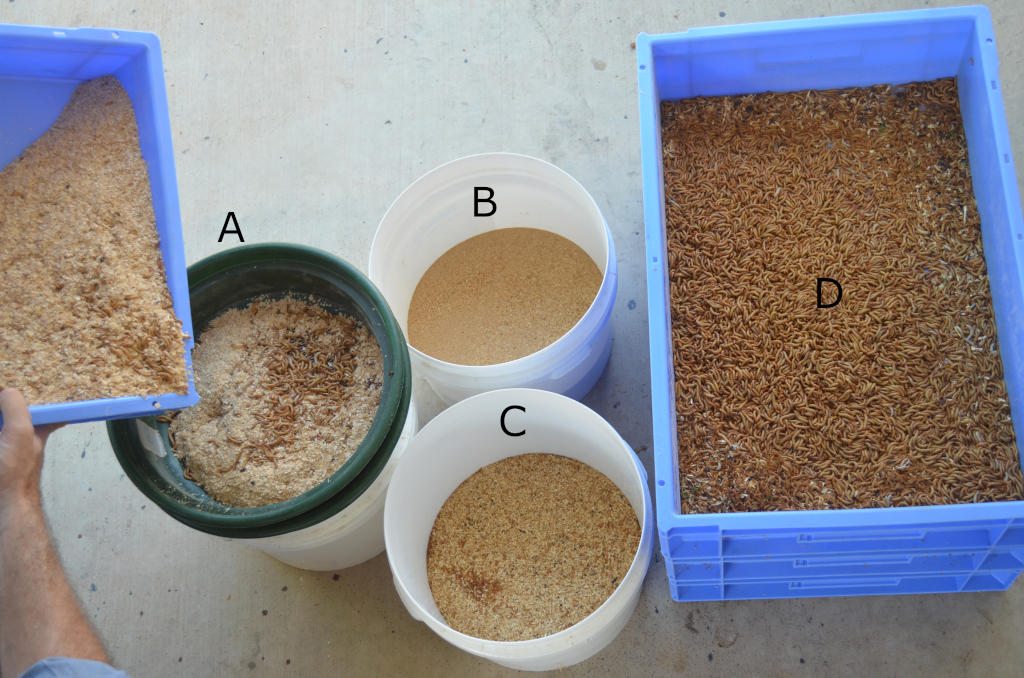In broad terms there are two different ways to breed both yellow and giant mealworms. Below we give an overview of each one and then you can go to the relevent section to get specific details of the method and how it applies to the species you are breeding (ie yellow and super mealworms).
At the end we discuss the Pros and Cons of each method to help you choose the best method for your circumstances.
1) Screen Method (Hobbyist)
In this system the top tray has a screen bottom which allows baby mealworms to fall through to a collection tray below. The worms move through this screen to avoid being eaten by the beetles.
As not all worms will move to the collection tray below, some are lost to cannibalisms by beetles. The substrate and eggs that fall through to the collection tray are moved to a rearing tray where the worms can grow up as a single age group.
As you process of separating the worms from the beetle is automated, it requires less maintenance than the filtering method described below. This makes it a popular choice with hobbyist. This convenience comes at a cost of lower production.
- For Yellow mealworms click here for an Overview of the Screen Method.
- For Giant Mealworms click here for an Overview of the Screen Method.
2) Filtering Method (Commercial)
In this method you have dedicated breeding trays which contain substrate, beetles and eggs.
On a regular basis, the eggs and substrate are separated from the beetles by manual filtering via a sieve. The substrate and eggs that have been separated, are then placed into a new rearing tray where the worms will develop as a single age group.
As the eggs are removed on a regular basis the subsequence worms will not be eaten by the beetles which gives this method greater production rates. This process is repeated on a regular basis (usually a week apart) to create schronised (same sized) batches of mealworms.
It however does require extra work for the filtering, and is best suited for commercial production where maximizing output is more important.
- For Yellow mealworms click here for an Overview of the Filtering Method.
- For Giant Mealworms click here for an Overview of the Filtering Method (coming soon).
3) Hybrid Model (Hobbyist or Commercial)
Perhaps you would like to blend both methods in your own way. You want to be small scale commercial and like the idea of having a number of low maintenance screen systems running. Or maybe you are a hobbyist and you don’t mind filtering every so often as you know the extra work will generate extra worms. Its your system, its completely up to you.
Pros and Cons of Each Method
Pros
Cons
Screen Method
- As the babies move through to the collection tray by themselves it requires less maintenance and time than the filtering method.
- Is well suited to the hobbyist or small scale commercial
- Housing can easily be build using common file or draw systems.
- Babies which do not move down into the substrate are likely to be eaten by the beetles which can provide a nutrient rich food for the beetles to help lay eggs.
- Some of the baby mealworms will hatch and be eaten by the beetles. This can reduce the production rate compared to the filtering method.
- If you use fine substrate such as wheat pollard or a mixed substrate (fine and course) then much of the smaller components will fall through the screen leaving little substrate for the beetles. This is corrected using a courser bran.
- Due to the potential lower production rates from cannibalism, it may have limited use for large scale commercial.
Filtering Method
- As cannibalism of baby mealworms is reduced to a minimum, production rates are higher. This makes it better suited to medium and large scale production.
- Requires and additional activity of filtering each week. This increases maintenance.




